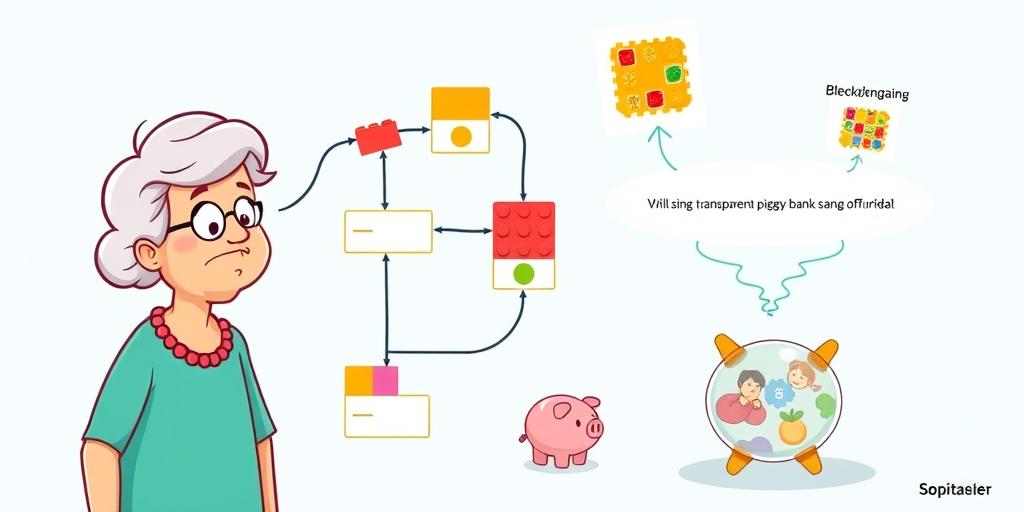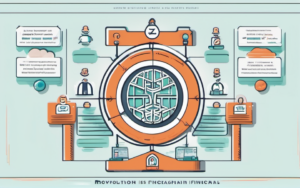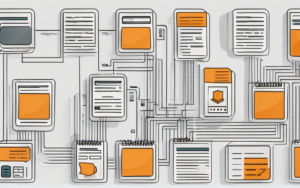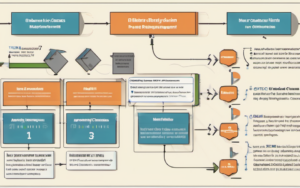Explaining the complexities of blockchain technology can feel daunting, even for tech-savvy individuals. But what if you had to explain Blockchain to your grandma? This seemingly impossible task becomes surprisingly manageable with the right approach, using humor and relatable analogies. This guide will show you how to break down the Blockchain barrier and make your grandma (and possibly yourself) laugh along the way.
1. Introduction: Breaking Down the Blockchain Barrier
We’re not just talking about tech jargon here; understanding Blockchain has implications for our future. It’s the foundation of cryptocurrencies like Bitcoin, but its applications extend far beyond digital money. This makes it a relevant topic for everyone, even your grandma.
1.1 Why Grandma Needs to Know About Blockchain (Besides the Jokes)
Understanding Blockchain is becoming increasingly relevant in our digitally-driven world. From secure online transactions to innovative ways of managing digital assets, blockchain technology is shaping the future. Even if your grandma isn’t directly involved in cryptocurrency trading, understanding the underlying principles can help her navigate the digital landscape more confidently. Plus, it’s a fun conversation starter!
1.2 Setting the Stage: A Simple Analogy
Imagine a shared cookbook, passed down through generations. Each new recipe (transaction) is added to the back, creating a chronological record. Everyone has a copy of this cookbook, ensuring everyone sees the same recipes. This, in its simplest form, is the concept of a shared, immutable ledger – the core of Blockchain. This shared, transparent record makes it very hard for anyone to alter or cheat the system.
2. The Basics: It’s All About the Ledger
The core of a blockchain is a digital ledger – a record of transactions. But this isn’t just any ledger; it’s distributed and secured in a way that makes it virtually tamper-proof.
2.1 What is a Ledger? (Think Cookbook, Not Spreadsheet)
Forget complex spreadsheets. Think of a blockchain as a shared, digital cookbook. Every time someone adds a new recipe (transaction), it gets added to the end of the book. Everyone who has a copy of the cookbook sees the new recipe added simultaneously. This ensures transparency and prevents anyone from altering past recipes.
2.2 The “Chain” Part: Linking Transactions Together
The “chain” in Blockchain refers to the way these transactions are linked together chronologically and cryptographically. Each new “block” of transactions is linked to the previous one, creating a secure and tamper-proof chain. If someone tries to change a past entry (recipe), it will disrupt the entire chain, making the alteration easily detectable. This makes it one of the most secure systems ever developed.
2.3 Security: Grandma’s Secret Recipe, Digitally Protected
This interconnected system ensures the security of the information. It’s like keeping Grandma’s secret cookie recipe under lock and key – but with many copies of the key distributed amongst trusted members of the family. If someone tries to alter the recipe (a transaction on the blockchain), everyone else will immediately notice it. This makes blockchain exceptionally secure for recording and verifying information.
3. Beyond the Basics: Adding Some Spice
Now that we’ve covered the fundamentals, let’s explore some more exciting applications of blockchain technology.
3.1 Cryptocurrencies: Digital Dough for the Digital Age
Think of cryptocurrencies, like Bitcoin, as digital money that operates on a blockchain. Each transaction is recorded on the shared ledger, making it transparent and secure. No single bank or institution controls it, making it a decentralized form of currency. This is why people find it attractive, even if they are confused about how exactly it works. Explaining it as “digital cash” that is hard to counterfeit usually does the trick.
3.2 Smart Contracts: Grandma’s Automated Will (Almost!)
Smart contracts are self-executing contracts with the terms of the agreement directly written into code. When pre-defined conditions are met, the contract automatically executes. Think of it as a sophisticated “if-then” statement for legal agreements. While not quite an automated will, it showcases how blockchain can automate processes with greater efficiency and transparency. This is also a great example of how blockchain can automate tasks and reduce the need for intermediaries.
3.3 NFTs: Grandma’s Digital Masterpieces
Non-Fungible Tokens (NFTs) are unique digital assets, representing ownership of something digital, like artwork, music, or even virtual real estate. Grandma’s knitting patterns could be turned into NFTs, proving their originality and allowing her to sell them online. This shows how blockchain is changing the way we think about digital ownership and authenticity.
4. Addressing Grandma’s Concerns (and Doubts)
Now, let’s address some common concerns and misconceptions surrounding blockchain technology. This way, you can confidently answer any questions and address any doubts she may have.
4.1 Is it Safe? (More Secure Than Her Cookie Jar)
Blockchain’s decentralized and cryptographic nature makes it incredibly secure. The distributed ledger makes it nearly impossible for anyone to alter the record of transactions without detection. It’s far more secure than traditional centralized systems.
4.2 Is it Complicated? (Simpler Than Knitting a Fair Isle Sweater)
The underlying technology might be complex, but the core concepts are surprisingly simple. By using relatable analogies, you can explain the basic principles without getting bogged down in technical details. Focus on the key ideas of a shared ledger, transparency, and security.
4.3 What’s the Point? (Beyond the Cool Factor)
Blockchain’s potential goes far beyond cryptocurrencies. Its applications span various industries, from supply chain management to healthcare, improving transparency, security, and efficiency. It’s about building trust in a digital world.
5. A Final Analogy: The Blockchain Family Tree
Think of a family tree. Each new member (transaction) is added to the tree, creating a permanent record of the family’s history. Everyone in the family has a copy of the tree, and any attempt to change it would be immediately noticed. This is very similar to how a blockchain works: it maintains a permanent, shared and verifiable record.
Further exploration into the world of blockchain can be easily found online. Many websites offer simple explanations and tutorials, making it accessible for anyone regardless of their technological background. Websites like Investopedia and CoinDesk are great places to start. Remember, understanding blockchain isn’t just for techies; it’s for everyone who wants to navigate the future with confidence.




